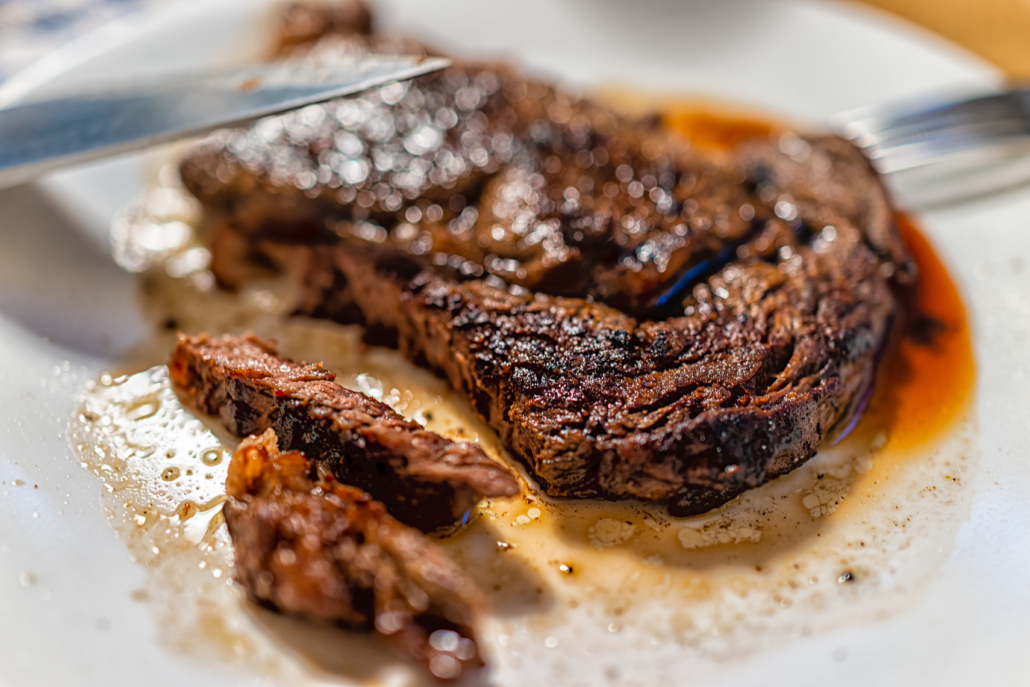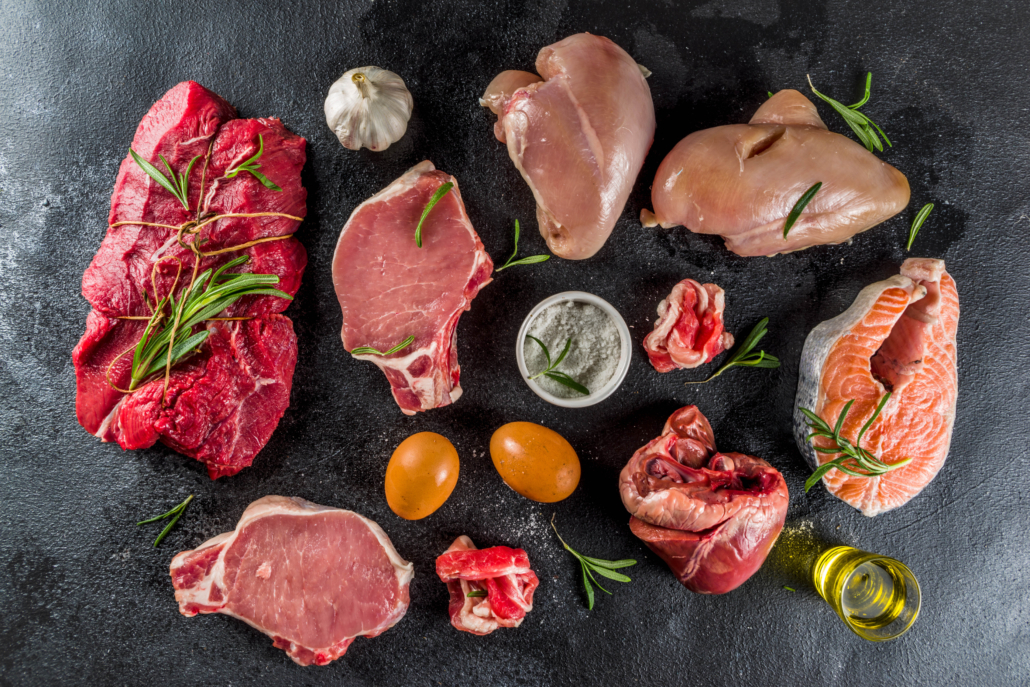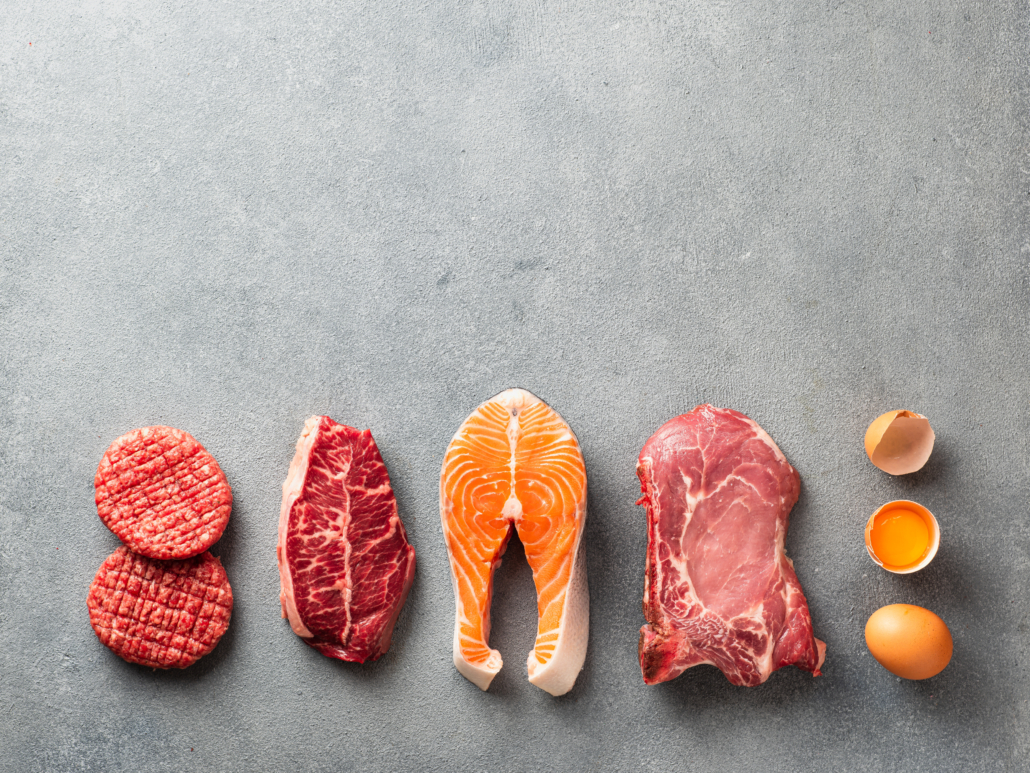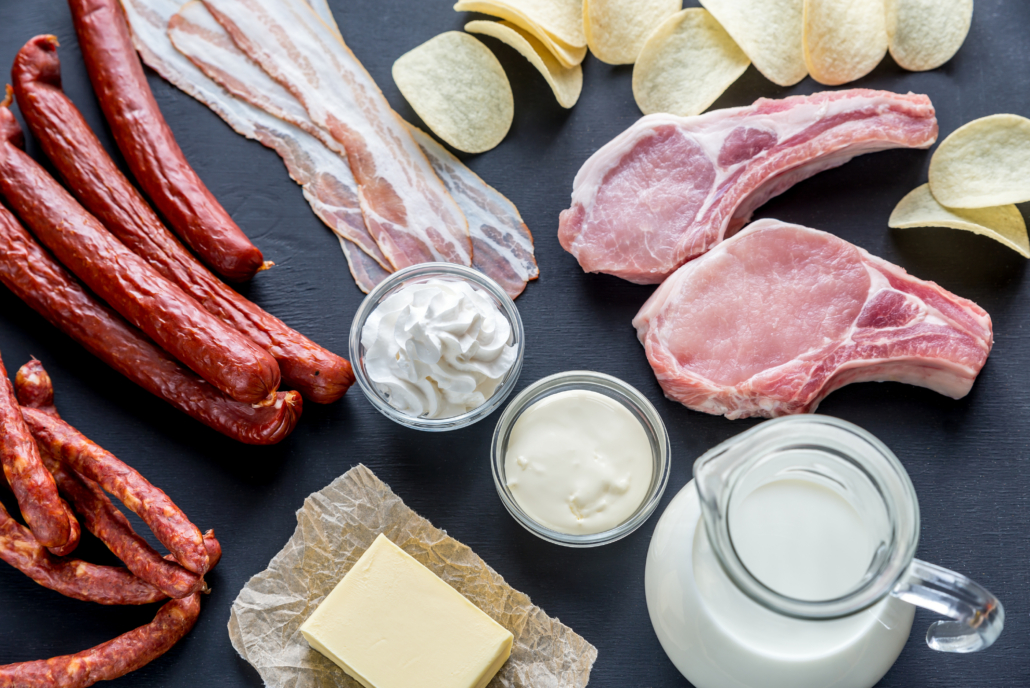We include products in articles we think are useful for our readers. If you buy products or services through links on our website, we may earn a small commission.
What is the “Meat and Fruit Diet”?
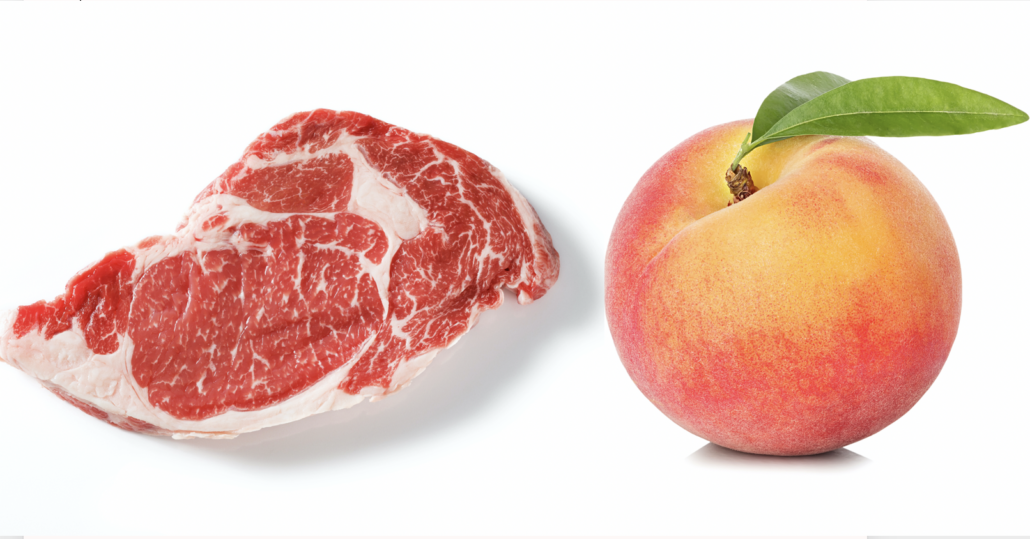
You may have heard of the meat and fruit diet from “animal-based” enthusiasts like podcaster Joe Rogan and “Carnivore MD” Paul Saladino.
This approach to eating is promoted as an ancestrally aligned way diet plan that supports hard-training athletes in replenishing their glycogen stores after intensive workouts.
But even meat and fruit diet enthusiasts state that this is only one version of a “carnivore-adjacent” diet.
Is the meat and fruit diet right for you? That depends on how well or not your body tolerates certain plant toxins and carbs.
In this article, we’ll take a closer look at the benefits, drawbacks, and variations of this approach.
Table of Contents
What is the Meat and Fruit Diet?
The meat and fruit diet is an approach to ancestral eating that is at once simple and complex.
On the one hand, it calls for eating only meat and fruit.
On the other hand, the types and quantities of meat and fruit you consume on the diet can result in remarkably different benefits and drawbacks.
Typical Meat and Fruit Diet
A typical meat and fruit diet, like an all-meat carnivore diet, is based around fatty “red” ruminant meats like beef, lamb, and bison.
Fatty cuts of steak take center stage, and many consider the ribeye to be king.
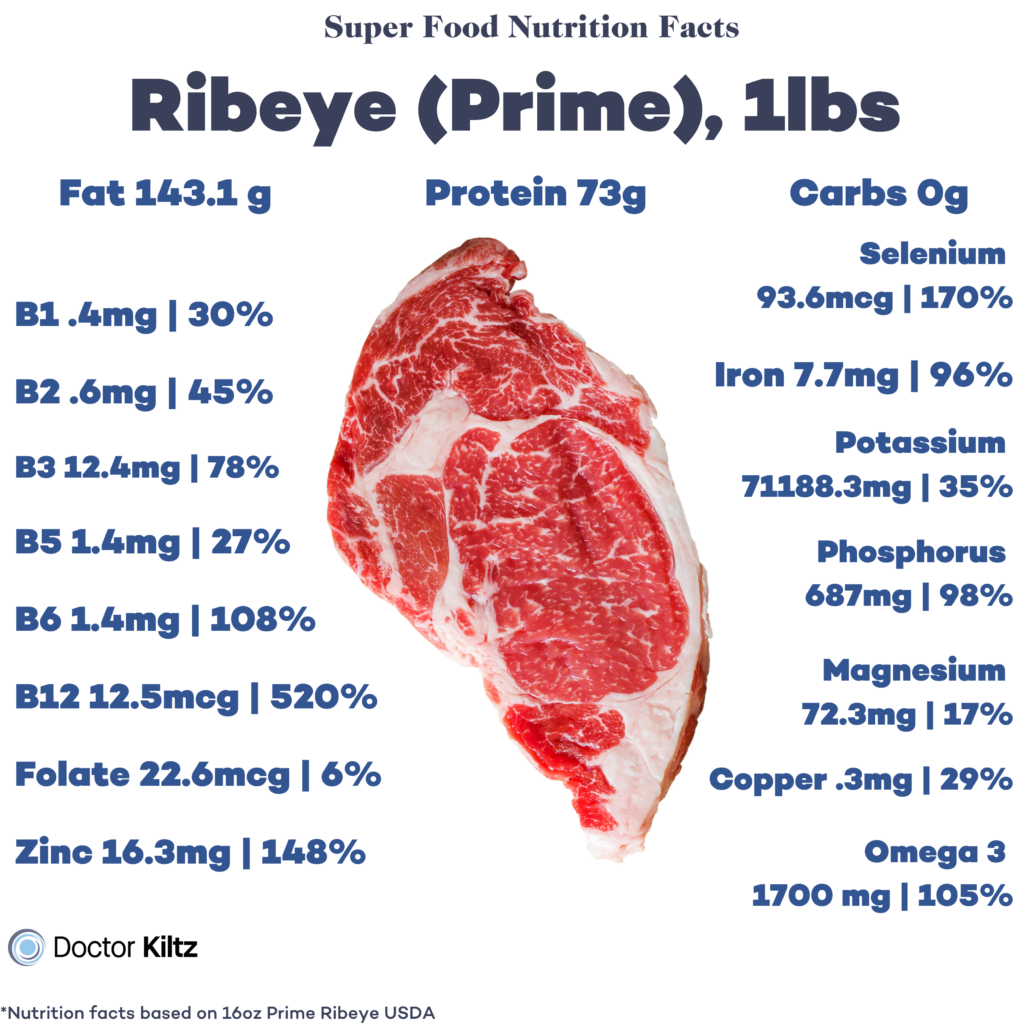
The idea here is that fatty ruminant meats have a near-perfect ratio of healthy fats and complete proteins. Ruminant meats also offer an abundance of bioavailable nutrients like zinc, B vitamins, iron, selenium, and nutrients only found in meat like CoQ10 and carnitine.
Other meats like pork, fatty fish, and poultry can also make a supplemental appearance, though they are less nutrient-dense and have less optimal fatty acids.
Meat and fruit enthusiasts consume between 1 to 2.5 lbs of meat per day.
What Kinds of Fruit and How Much?
The types and quantities of fruit people eat are less standardized.
Some meat and fruit enthusiasts consume only small quantities of high-vitamin C fruits like kiwis and guavas that contribute less than 50 grams of daily carbs. This low carb intake maintains the metabolic state called ketosis.
Other meat and fruit dieters focus on non-sweet fruits like coconut, avocados, and squash.
Some fruit and meat dieters eat up to 300 grams of carbs a day from sugary fruits like pineapples and apples.
While others still only consume fruit once every few days or just before a heavy workout.
All of this points to one of the key draws to the meat and fruit approach–its flexibility.
Where Did the Meat and Fruit Diet Come From?
The meat and fruit approach to a meat-based diet was Popularized by “Carnivore, M.D.” Paul Saladino as an evolution of his approach to a carnivore or meat-based diet.
After years of consuming and promoting a meat-only diet with lots of organ meats, Saladino found that his electrolyte levels were haywire.
After moving to Costa Rica and experimenting with eating fruit, Saladino came to believe that some insulin increase after eating helps the body to hold onto electrolytes and is important to synthesizing key antioxidants like glutathione.
After adding fruit and honey to his diet, Saladino checked routinely monitored his insulin and blood sugar levels. He found that his fasting insulin was the same as when he was a strict carnivore (2.4 miu/ML). When wearing a continuous glucose monitor, he found that his glucose was actually lower than it was on a fully ketogenic diet.
Currently Saladino still bases his diet around fatty meat and organ meats while allowing for as much fruit as his body craves. In a 2022 podcast episode, Saladino described eating a pineapple, two mangos, papaya, and other fruits adding up to 200-300 grams of carbohydrates in a day.
The podcast host Joe Rogan is another meat and fruit enthusiast who claims that these two food groups make up 90% of his diet.
In a conversation with the popular neuroscientist and health communicator Andrew Huberman, Rogan explained that he liked his experience on the standard carnivore diet but that he found that it interfered with his heavy lifting workouts.
Huberman responded that he did great on a just meat “carnivore diet.” And when he tried adding fruit and honey, it “sent his appetite” through the roof, and he couldn’t stop eating. But that, like Rogan, it impeded his heavy-lifting workouts.
Both Rogan and Huberman agreed that one of the keys to the benefits of an only meat carnivore diet is that it’s extremely satiating, so you tend to eat fewer calories.
They reference the psychologist Jordan Peterson–a former guest on the podcast–as someone who doesn’t do heavy weight lifting and does great on the all-meat “lion diet” of just steak, salt, and water.
Huberman also pointed out that on a low-carb diet, your adrenaline and epinephrine levels increase, which makes you more alert and move more. The more movement, the healthier we are.
Things to Keep in Mind About Eating Fruit on the Carnivore Diet
Fruit is sweet and colorful because it’s actually meant to be eaten by animals. Enticed by fruit, predators eat these plant parts and spread the seeds far and wide.
Vegetables are often bitter and need to be cooked to become edible, and they are not meant to be eaten by predators.
For most people, moderate consumption of certain fruits is probably harmless. However, some people may have sensitivities to certain fruits and plant toxins.
Fruit has been a part of the diet of hominins (pre-human ancestors), and early humans. However, part of what separated humans from our more monkey-like ancestors is that we learned to scavenge and hunt for fatty meat. This rendered fruits a much smaller part of our diets, especially as we migrated to colder regions where fruit was much more scarce.
The fruit that our ancestors had access to was also much smaller, more fibrous, and far less sugary.
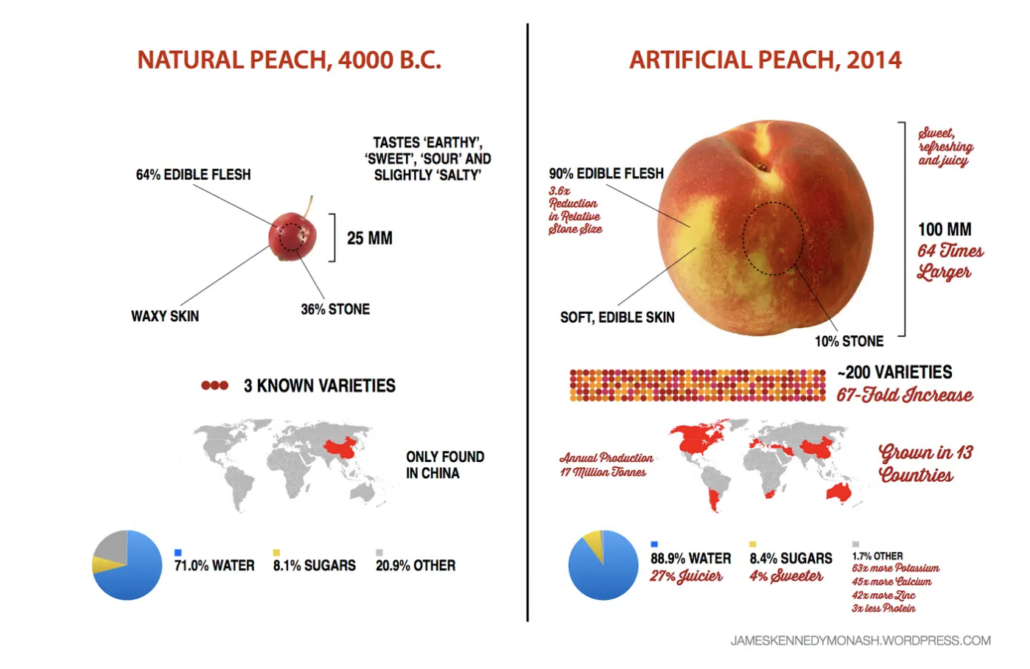
Source: James Kennedy
What we think of today as fruit is actually a marvel of industrial engineering. It’s been bred to be large, sugary, and to resist decay, leading to the term “frankenfruit.” [3]
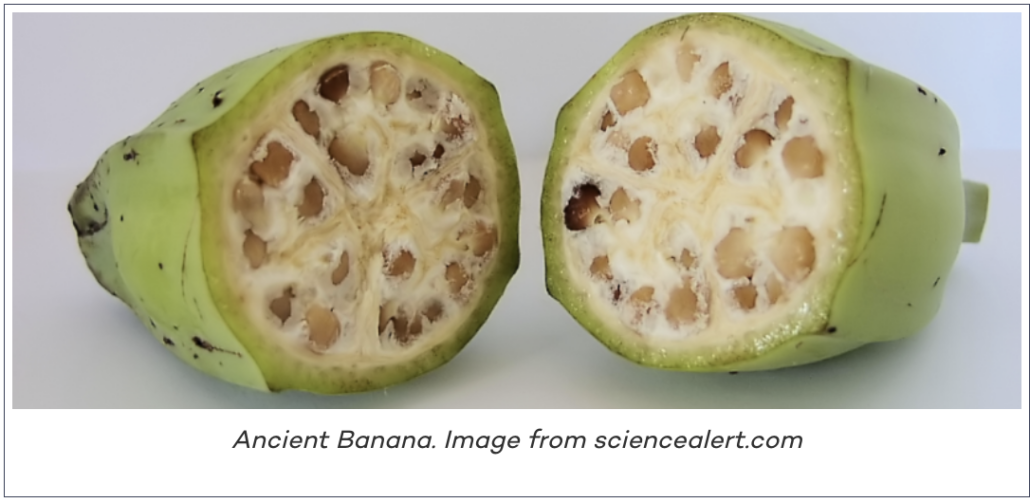
Do You Need to Get Nutrients from Fruit? Nope!
Though most fruits contain some antioxidants and vitamins, studies show that these compounds are poorly absorbed and used by the body.
A 2009 study found that “phytochemicals as dietary components are not essential for short-term well-being.”
This is because the human body is specially evolved to obtain and synthesize vitamins and antioxidants sourced from animal products. Many of these require dietary fat for absorption, including vitamins A, D, E, and K. The plant varieties of these nutrients exist in formats that the body is not evolved to readily absorb and utilize.
Our bodies experience phytochemicals from fruit as non-nutrient xenobiotics. This is a fancy word for unwanted foreign substances. And we rapidly eliminate them.
Though antioxidants are generally good things to have in our bodies, when we’re metabolically healthy, anti and pro-oxidants are in balance, and we don’t need to overcompensate.
It’s important to highlight that carbs from grain flour and added sugars are pro-oxidants.
When you cut carbs it’s likely that you won’t need to increase anti-oxidant intake.
Vitamin C in Meat?
Contrary to popular belief, fresh meat has plenty of vitamin C.
2007 research published in “Meat Science Journal” found that fresh beef provides approximately 1.6 mcg/g of vitamin C in grain-fed meat and 2.56 mcg/g in grass-fed meat. If you’re consuming 1000 grams of meat ( 2.2 lbs) per day on a carnivore diet, you will be getting between 16 mcg and 25.6 mcg of vitamin C.
This is more than sufficient to prevent vitamin C deficiency.
| Beef Muscle Meet (1000 grams/2.2 lbs) | Amount Vitamin C | % sufficient to prevent scurvy |
| Grass-fed beef | 25.6 mcg | 256% |
| Grain-fed beef | 16 mcg | 160% |
Meat and Fruit Diet Carb Chart
If you want to maintain ketosis on the meat and fruit diet, this chart can help you focus on low-carb fruits.
| Low carb fruit | Fructose content | Fiber content |
| Raspberries (½ cup) | 3 grams | 4 grams |
| Blackberries (½ cup) | 4 grams | 4 grams |
| Avocado (1 whole) | 4 grams | 14 grams |
| Strawberries (8 medium) | 6 grams | 2.8 grams |
| Plum (medium-sized) | 7 grams | 0.9 grams |
| Clementine (medium-sized) | 8 grams | 1.3 grams |
| Kiwi (medium-sized) | 8 grams | 2.1 grams |
| Cherries (½ cup) | 8 grams | 1.3 grams |
| Blueberries (½ cup) | 9 grams | 1.8 grams |
| Cantaloupe (1 cup) | 11 grams | 1.4 grams |
| Peach (medium-sized) | 13 grams | 3 grams |
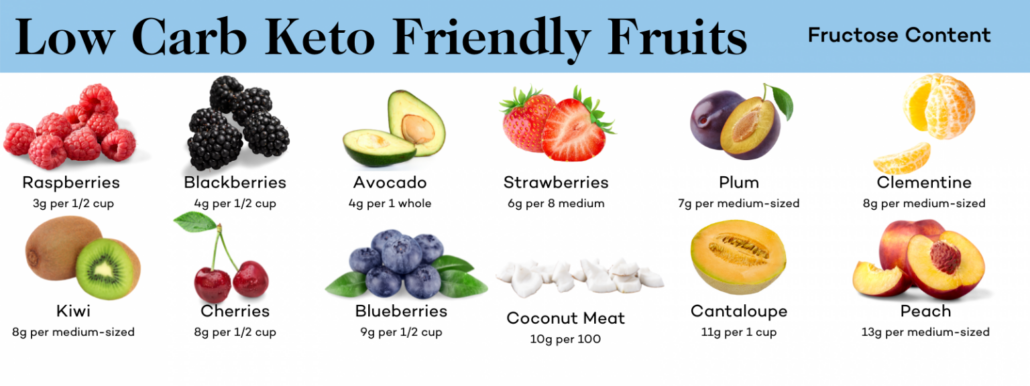
Fruit and Fruit Products to Avoid on the Meat and Fruit Diet
There’s a difference between eating fresh whole fruit and drinking fruit juice or consuming dried fruits.
Fruit smoothies and dried fruits are extremely concentrated sources of sugar.
A 2019 study found that drinking a single 100 ml glass (⅓ can) of a sugary drink (including pure fruit juice) was linked to an 18% increase in overall cancer risk and a 22% jump in the risk of getting breast cancer.
The Meat and Fruit Diet: The Bottom Line
The meat and fruit diet is a variation of the all-meat carnivore diet.
Some people add fruit to the carnivore diet in order to inhibit ketosis. The belief is that long-term ketosis may make it difficult for the body to properly maintain and balance electrolytes.
From this perspective, eating fruit helps regulate insulin levels. At the same time, you continue to eliminate most plant toxins and antinutrients from veggies while maintaining your intake of nutrient-dense animal products.
The meat and fruit diet may be especially beneficial for hard training athletes who need to replenish the glycogen stores in their muscles to maintain performance.
However, the meat and fruit diet is loaded with sugar. The research is clear that high sugar diets are the root cause of the metabolic disorders and chronic inflammation that a true carnivore is so effective at combating. We encourage people to explore and discover what works best for them, but we don’t recommend consuming large quantities of fruit.











